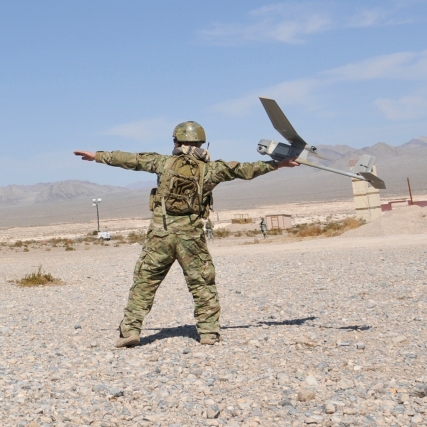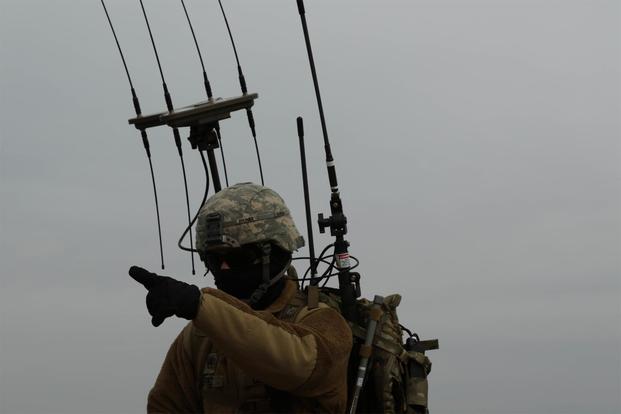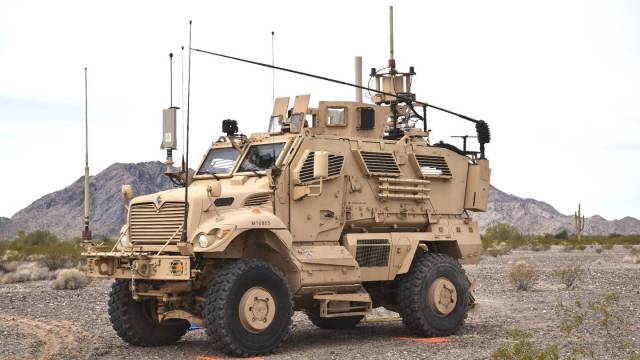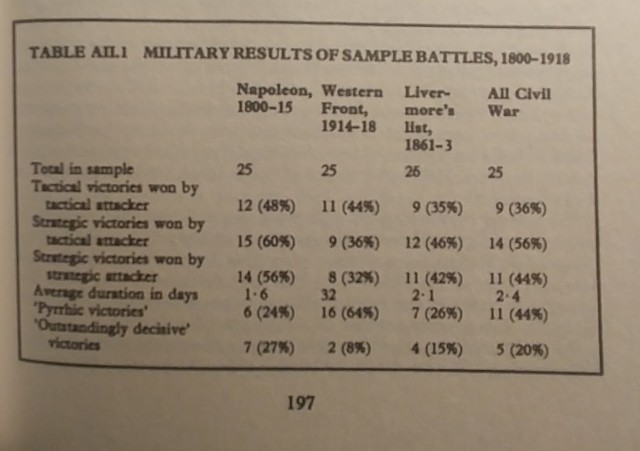Just as firearms require ammunition and vehicles require fuel, small unmanned systems (SUAS, even if the “A” does stand for “air”) require electrical power. This allows us to make some predictions about the capabilities and tactics of small units with SUAS.
Tradeoffs & Alertness
SUAS and their power supplies have weight and volume. Since the capacity of any transport (including soldiers’ own two feet) is limited, either future SUAS will take up currently “extra” capacity, or they will replace something currently carried.
Soldiers can eat their boots, but tanks need gas.
General George S. Patton
Like fuel and ammunition, unit leaders must recognize SUAS operating time as a finite commodity to be expended for tactical effect. A unit equipped with multiple SUAS platforms will not have them all on at the same time for the same reason they don’t keep their soldiers awake, run vehicles, or fire machine guns 24 hours a day. Generally, a unit’s SUAS will either be “inert”, “alert”, or “engaged” — offline while the unit is either not threatened or covered by another unit, minimally operating to maintain awareness and detect threats, or at maximum capacity to neutralize a threat. This is exactly analogous to existing tactics and not difficult to understand.
The default “alert” SUAS will most likely be a fixed-wing flier, since these provide the most efficient power to operating time ratio. Ground vehicles (SUGS?) could have an even higher ratio since they wouldn’t need motor power when not moving, and might be an option for static units or to absolutely minimize aerial/EM footprints. However, they’ll be slower and easier to hide from. Note that the RQ-11 Raven is probably too large for a true light infantry platoon and certainly too large for a squad.

Get used to this thing.
Limitations
The tradeoff problem is most pronounced for light infantry. In general, these men carry as much as they can and not a pound less. Any “excess” load capacity ends up filled by extra ammunition. How much and what sort of ammunition a light infantry company, platoon, or squad ought to give up in favor of SUAS is an empirical question, but I highly doubt the answer is zero. Most likely, the lightest units will mostly use SUAS for detection and rely on external assets to kill, as they do now with artillery. Since the detection capability of SUAS-equipped units will increase, the ratio of infantry to “artillery” will likewise increase.

The future is so bright for carrying heavy shit, you don’t need eyes to see it.
Armored units also have a problem. First, the effective movement and weapon ranges of armored fighting vehicles are higher than light infantry, so their “small” unmanned systems will generally be larger. A SUAS with a 5-km range is of limited use to a tank that can already see and shoot nearly that far, and is more likely located in unrestrictive terrain.
The more critical problem is that of crew load. Fighting a tank requires all of the crew’s attention; they don’t have any to spare for SUAS. While automation and control might allow this in the future, the problem is nontrivial. These two issues have frustrated attempts to integrate SUAS into mechanized and especially tank formations so far. In the short term, any integration of unmanned systems into armored units will probably require the use of a separate, dedicated control vehicle. In the long term, designers will have to start paying as much attention to crew load and systems integration inside fighting vehicles as in aircraft.
Motor-rifle type units (such as “Stryker” brigades) are best suited to take advantage of SUAS. They have ready access to electrical power and transport. Designers clearly anticipated something like this requirement in developing modern troop carriers, which can readily serve as mobile control stations.
Tactical Electronic Warfare
EM emissions discipline will become both more important and more complex. The likelihood of initial enemy contact being made on either or both side via identification of SUAS will be high. Small-unit commanders and soldiers should know the significance of enemy small unmanned platforms just as they now know the significance of other types of enemy equipment.

A stopgap solution, gluing lots of antennas to a completely roadbound vehicle.
Mature SUAS will be well camouflaged and probably most easily identified through detecting their control and communication links. The ability to detect EM emissions across a broad spectrum will become as important even at the platoon if not the squad level as image intensifiers and near-infrared are now. Tactical electronic warfare units that specialize in detecting, spoofing, and obstructing these emissions beyond the capability of line combat units will return. The resulting arms race between tactical unmanned systems and electronic warfare will contribute to the unsuitability of amateur/civilian UAVs in combat.
Conclusion
Motorized infantry stand to gain the most from small unmanned systems because of their manpower and transport capability. Light infantry have limited payload, and current armored units are too specialized.
Officers should get used to viewing SUAS operating time as a supply constraint, and establish standard readiness postures for stand-down, baseline, and stand-to use of these devices.
Electronic warfare will become more important at all tactical levels.
![1117353[1]](https://mfoilblog.files.wordpress.com/2018/09/11173531.jpg?w=640)

![1903-springfield-rifle-F[1]](https://mfoilblog.files.wordpress.com/2018/09/1903-springfield-rifle-f1.jpg?w=640)




